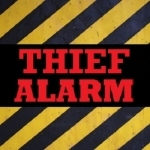
Portrait Blur - Free Lens and Depth Effect Bokeh
Photo & Video and Lifestyle
App
Professional DSLR lens blur on ANY smartphone. Similar to the iPhone 7 plus Portrait Mode. Portrait...

Thief Alarm - Burglar Alert
Utilities and Entertainment
App
★DELUXE VERSION OF THE BEST RATED ALARM APP ON SALE FOR VERY LIMITED TIME ★YOU COULD RECORD YOUR...

Anti-Theft Alarm for iPhone, iPad and iPod
Lifestyle and Navigation
App
★DELUXE VERSION OF THE BEST RATED ALARM APP ON SALE FOR VERY LIMITED TIME ★YOU COULD RECORD YOUR...

Taxi Parking Real Car Driving Simulator
Games
App
Featuring an all-new game mode – can you pick up your passengers and drop them at their...

Face & Body Photo editor
Photo & Video and Entertainment
App
This is a simple but powerful photo distortion App. You can use it to simulate body transformations,...

Christian Dating
Dating, Lifestyle and Social Networking
App
FREE DATING SERVICE FOR CHRISTIANS HAS ARRIVED ON THE iPHONE! With NO ON-GOING FEES OR...

GameBuddy for League
Social Networking and Entertainment
App
GameBuddy helps you find perfect teammates for League of Legends! Say goodbye to flaming League of...

Jewish Dating
Dating, Lifestyle and Social Networking
App
FREE DATING SERVICE FOR JEWISH SINGLES HAS ARRIVED ON THE iPHONE! With no on-going fees or...

Telegram Messenger
Communication, Productivity and Social Networking
App
Pure instant messaging — simple, fast, secure, and synced across all your devices. Over 100...
Social networking stickers communication texting

Shazam Encore
Music and Entertainment
App
Shazam Encore - the best of Shazam without the ads! Shazam is one of the world’s most popular...